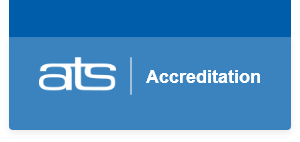Our Standards
The Standards of Accreditation, adopted in 2020, are principle-based
and focus on educational quality, accreditation clarity, and contextualized flexibility. To assist schools in implementing them, the ATS Board of Commissioners has adopted a set of
“self-study ideas” that accompany each standard (see Standards of Accreditation with Self-Study Ideas), as well as a Self-Study Handbook. For further information about how the Standards of Accreditation are implemented and interpreted, schools should also consult the
new Policies and Procedures, adopted by the membership and Board in 2020. An
annotated version of the new standards with
notes explaining various revisions approved in 2020 is also available. The Ten Educational Principles Guiding the Standards of
Accreditation provide a broad basis for better understanding the Standards and they articulate key commitments of the Standards.
*NOTE: The ATS Commission has also developed a website called Understanding the Standards. It provides many helpful resources for those wanting to become familiar with the Standards, as well as with
the Policies and Procedures, with tips also for those engaged in self-studies and in evaluation visits.
Note about Notations (now warnings)
Previous versions of the Standards of Accreditation and the Policies and Procedures used the term “notation” to refer to instances where a
member school was not meeting or not fully meeting one or more standards. The Policies and Procedures now uses the term “warning.” Policies and Procedures III.G describe the term as: “Issuing a warning
is a public action (the lowest level of three public sanctions; see III.H-I for the other two) that is taken when the Board determines that an accredited school substantially meets the
standards but is at risk of not meeting one or more standards."
"The Board may issue a warning based on information from an evaluation committee (for a comprehensive or focused visit), a required report, regular monitoring activities, or other appropriate
sources. Issuing a warning is a reviewable action (see VIII.A).” Section III.G.1 of that document further states: “In issuing a warning, the Board will cite the standard(s) that
the school is at risk of not meeting and stipulate any reports and/or visits required of the school, within a timeframe specified in the Board’s action letter to the school [typically
not to exceed two years].”




